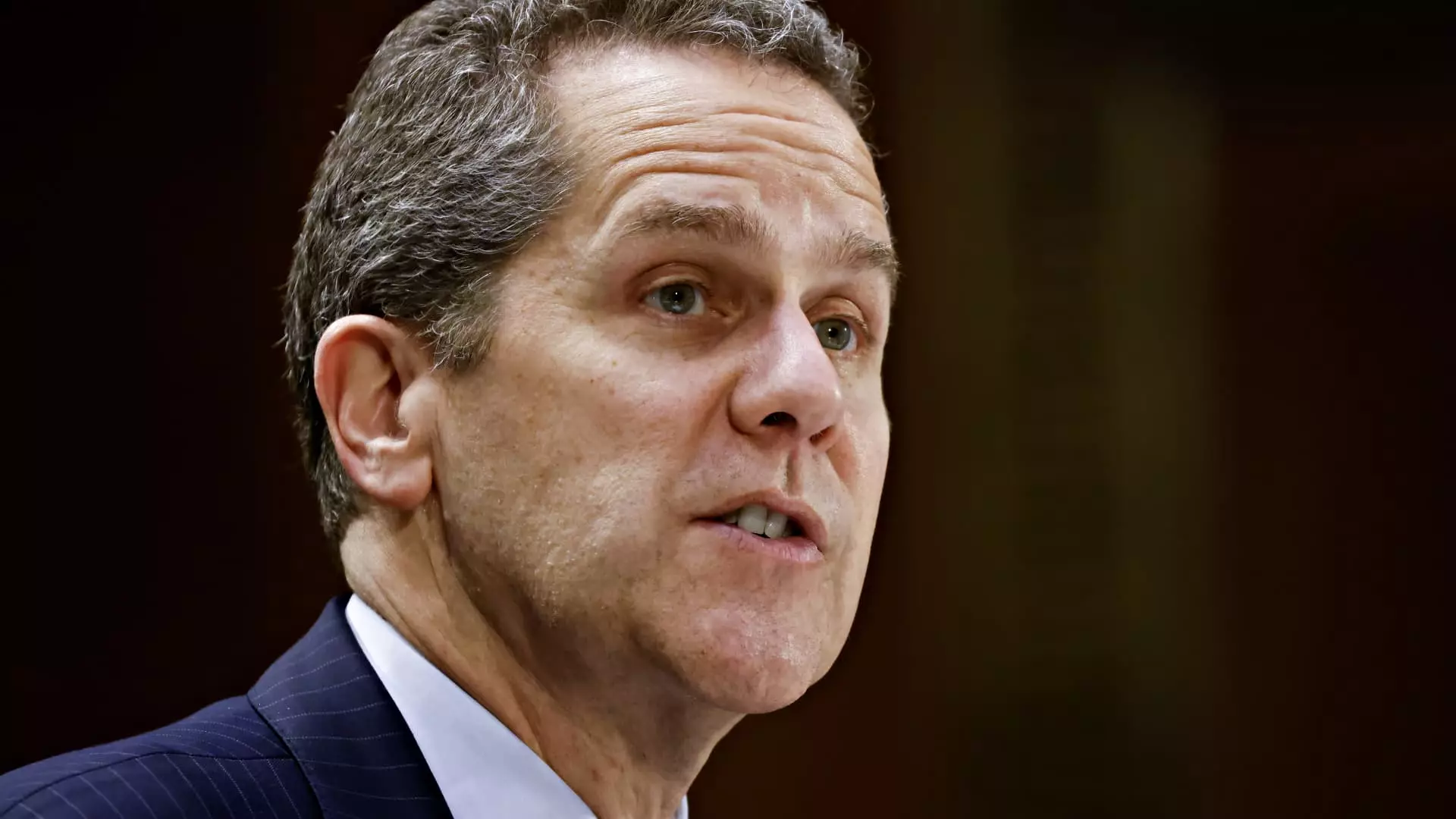The impending resignation of Michael Barr, the Federal Reserve’s vice chair for supervision, heralds a significant change in the landscape of U.S. banking regulation. Effective February 28, Barr’s departure will create a vacancy that President-elect Donald Trump is expected to fill with a candidate who aligns more closely with his administration’s pro-business objectives. This transition marks an essential moment for the Federal Reserve as it seeks to maintain stability in the face of evolving political landscapes and regulatory priorities.
Barr’s announcement comes amidst rampant speculation surrounding his role and the future direction of U.S. financial oversight. As a critical player who has shaped policies since the aftermath of the 2008 financial crisis, Barr has faced pressure to adapt regulations to better accommodate the banking sector. His resignation, while officially a voluntary decision, suggests a strategic retreat to avoid a contentious confrontation with the incoming administration. By stepping down, he aims to mitigate possible distractions that could hinder the Fed’s broader mission of safeguarding the financial system.
Market Reactions and Immediate Effects
In the wake of Barr’s announcement, financial markets responded positively, indicating a bullish sentiment in the banking sector. The SPDR S&P Bank ETF, which tracks major banking institutions, registered a gain exceeding 1%. Such shifts highlight the market’s sensitivity to regulatory news, underscoring how leadership changes can directly influence trader confidence and stock performance. This reaction illustrates a broad desire among investors for a more accommodating regulatory environment, which a new appointment might provide.
The Federal Reserve has noted a deliberate pause on key regulatory decisions until Barr’s successor is appointed, creating a temporary power vacuum that could affect ongoing initiatives. One major project pending review is the “Basel endgame,” a set of stringent rules aimed at fortifying the banking system post-crisis. These reforms have encountered resistance from industry leaders who argue that they stifle growth and innovation. A new vice chair could signal a shift in the balance between rigorous oversight and fostering a more favorable climate for banking operations.
During his tenure, Barr confronted numerous challenges, notably ensuring the resilience of the banking system amidst crises such as the collapse of Silicon Valley Bank in early 2023. His proactive measures, including the creation of liquidity facilities, showcased his commitment to maintaining financial stability. Yet, his departure raises questions about the ongoing efficacy of the Fed’s strategies in an increasingly complex economic climate. The forthcoming appointment will not only fill Barr’s shoes but will also shape the future trajectory of federal banking oversight, reflecting the delicate balance between regulation and economic growth.
Michael Barr’s resignation from the vice chair for supervision paves the way for a new era in banking regulation as the Federal Reserve prepares for an administration that favors more lenient policies. The implications of this leadership change will resonate throughout the financial sector, indicating a significant shift in direction that could redefine relationships between regulators and the banking industry. As stakeholders await the announcement of Barr’s successor, the broader impacts of this transition will undoubtedly be closely monitored by investors, regulators, and the public alike.


Leave a Reply